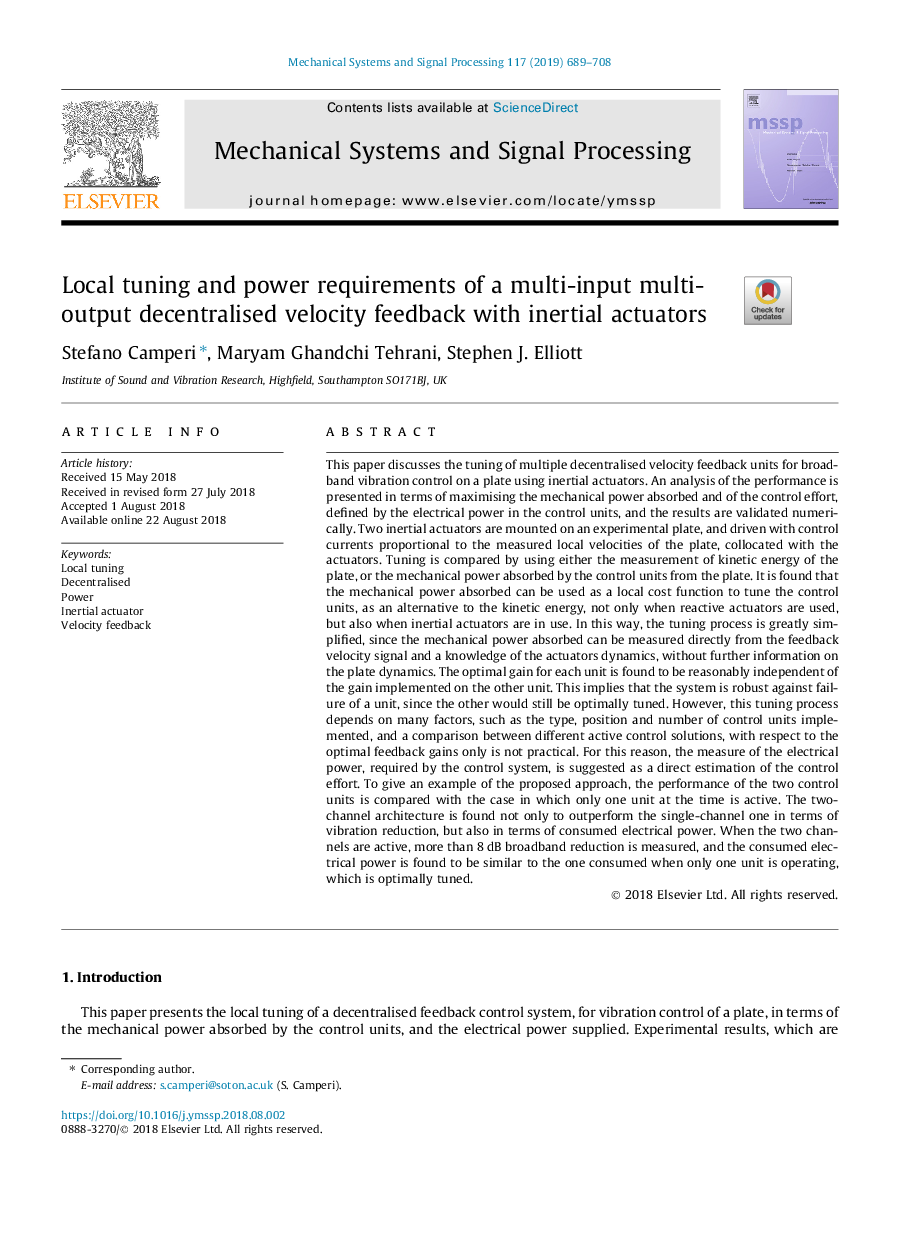| کد مقاله | کد نشریه | سال انتشار | مقاله انگلیسی | نسخه تمام متن |
|---|---|---|---|---|
| 11002950 | 1451818 | 2019 | 20 صفحه PDF | دانلود رایگان |
عنوان انگلیسی مقاله ISI
Local tuning and power requirements of a multi-input multi-output decentralised velocity feedback with inertial actuators
ترجمه فارسی عنوان
تنظیم محلی و نیازهای برق یک بازخورد سریع غیرمتمرکز چند ورودی چند ورودی با محرک های استنتاج
دانلود مقاله + سفارش ترجمه
دانلود مقاله ISI انگلیسی
رایگان برای ایرانیان
موضوعات مرتبط
مهندسی و علوم پایه
مهندسی کامپیوتر
پردازش سیگنال
چکیده انگلیسی
This paper discusses the tuning of multiple decentralised velocity feedback units for broadband vibration control on a plate using inertial actuators. An analysis of the performance is presented in terms of maximising the mechanical power absorbed and of the control effort, defined by the electrical power in the control units, and the results are validated numerically. Two inertial actuators are mounted on an experimental plate, and driven with control currents proportional to the measured local velocities of the plate, collocated with the actuators. Tuning is compared by using either the measurement of kinetic energy of the plate, or the mechanical power absorbed by the control units from the plate. It is found that the mechanical power absorbed can be used as a local cost function to tune the control units, as an alternative to the kinetic energy, not only when reactive actuators are used, but also when inertial actuators are in use. In this way, the tuning process is greatly simplified, since the mechanical power absorbed can be measured directly from the feedback velocity signal and a knowledge of the actuators dynamics, without further information on the plate dynamics. The optimal gain for each unit is found to be reasonably independent of the gain implemented on the other unit. This implies that the system is robust against failure of a unit, since the other would still be optimally tuned. However, this tuning process depends on many factors, such as the type, position and number of control units implemented, and a comparison between different active control solutions, with respect to the optimal feedback gains only is not practical. For this reason, the measure of the electrical power, required by the control system, is suggested as a direct estimation of the control effort. To give an example of the proposed approach, the performance of the two control units is compared with the case in which only one unit at the time is active. The two-channel architecture is found not only to outperform the single-channel one in terms of vibration reduction, but also in terms of consumed electrical power. When the two channels are active, more than 8â¯dB broadband reduction is measured, and the consumed electrical power is found to be similar to the one consumed when only one unit is operating, which is optimally tuned.
ناشر
Database: Elsevier - ScienceDirect (ساینس دایرکت)
Journal: Mechanical Systems and Signal Processing - Volume 117, 15 February 2019, Pages 689-708
Journal: Mechanical Systems and Signal Processing - Volume 117, 15 February 2019, Pages 689-708
نویسندگان
Stefano Camperi, Maryam Ghandchi Tehrani, Stephen J. Elliott,
